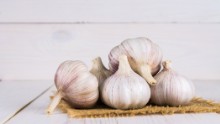What’s in Your Tap Water? Understanding & Minimizing Yourby Irene Villano |
When most people get thirsty, they go to their tap or refrigerator for a drink of water without giving it a second thought. But what if you discovered that what was in the tap water you used every day for drinking, cooking, and washing could potentially harm you? Sadly, studies have found that potential cancercausing agents are in almost every municipal water system in the US!
The Environmental Working Group (EWG), an environmental watchdog agency, has done the testing and the results are frightening. Out of 201 systems tested across 43 states, “probable human carcinogens” were found in every sample tested. That means that the chemicals used to clean and treat the water for public consumption are harmful - despite being declared safe for drinking by the very government agencies who are meant to protect us.
The EWG wants the government to clean up its act, our water treatment systems, as well as the sources from which water is received. Removing known sources of tap water pollution would lessen the need for harmful chemicals such as chlorine being used to treat our water. Contaminants in the water supply, including organic particles from animals, fallen leaves, etc., can react with chlorine and other chemicals used during treatment to produce toxic byproducts. These byproducts aren’t tested for, nor are they monitored.
Manufacturing and Pharmaceutical Contaminants Found in Drinking Water
Dibutyl phthalate (DBP) is a disinfection byproduct that is 1,000 times more toxic than chlorine. This toxic chemical is used in the making of plastics, paint, adhesives, textiles, printing ink, and much more. There are no safe levels and DBP (along with other cancer-causing phthalates such as butyl benzyl phthalate (BBP) and di (2-ethyhexyl) phthalate (DEHP) has been detected in drinking water samples around the country.
Water treatment plants use a combination of chemicals. The most toxic is chloramine, a blend of chlorine and ammonia. Approximately 20 percent of Americans drink water that’s been treated with chloramine.
The EPA says it doesn’t know whether chloramine itself is carcinogenic, but their IRIS document for NDMA, a DBP (disinfection by-product) of chloramine, states that it’s a “probable human carcinogen.” In reality, there are more than 600 DBPs of chloramine, and little is known about most of them.
Here are other contaminants often found in drinking water:
HAAs – Haloacetic acids may cause liver disease in test animals, but as a human carcinogen it’s known to cause low birth weights, sperm toxicity, and neurological issues.
VOCs – Volatile organic compounds lead to central nervous system issues, drowsiness, and irritation of human skin and mucous membranes.
THMs – Trihalomethanes cause cancer in lab animals and trigger the production of free radicals in the human body and are associated with bladder cancer, developmental problems, and gestational dysfunction.
These tap water pollutants cannot be removed by boiling, distilling, or evaporation. They also produce vapors that can accumulate in small spaces such as bathrooms and kitchens.
Other chemicals in our water supply are just as disturbing and there may be hundreds, if not thousands of them present in municipal water supplies. The Environmental Protection Agency (EPA) only regulates nine pollutants but they represent less than two percent of the unwanted chemicals in the system.
In one report, over 100,000 man-made chemicals were detected in the water from public treatment systems. Other chemicals can include toxic herbicides, pesticides, and pharmaceutical drugs such as statins, anti-depressants, hormone treatments (replacement therapy and contraception), and antibiotics.
That doesn’t even take into account the approved mass fluoridation of our water supply that has been linked to cancer and neurological deterioration by hundreds of studies.
The (Avoidable) Dangers of Fluoride in Our Water Supply
For more than 50 years, much of the world (including the US, Canada, the UK, Ireland, Australia, and New Zealand) has embraced a policy of lacing public water supplies with a chemical substance known as fluoride that mainstream dentistry claims is helping to prevent tooth decay.
But the science seems to suggest that this policy is not only outdated but woefully misguided, and that fluoride may actually be a major risk factor in the development of cancer and other health problems.
After pouring through the evidence myself, I’m also convinced that consuming synthetic fluoride chemicals via municipal drinking water is not the best option if you’re trying to remain healthy and cancer-free. The risks far outweigh any “perceived” benefits, and yet most Americans who live in urban and suburban areas have no choice but to drink and bathe in water that contains what can only be described as an industrial waste product with a laundry list of potential health risks.
Cancer-Causing Toxins in Fluoride
A 1936 issue of the Journal of the American Dental Association stated that fluoride at the 1 ppm (part per million) concentration is as toxic as arsenic and lead. This is the exact amount of fluoride that is dripped into municipal water supplies across the USA! Fluoride inhibits enzyme activity, paralyzes white blood cells, and causes collagen to break down. Enzymes, the immune system’s leukocytes, and collagen are all fundamental in fighting cancer. And all three are adversely affected by fluoride.
Fluoride is the chemical byproduct of industrial processes like phosphate fertilizer mining and production. The fluoride gases released during the manufacture of synthetic fertilizers used in chemical-based agriculture are trapped by large “wet scrubbers” that turn them into liquids and/or powders, which are then hauled off to municipal water departments to be injected into the water piped into your home.
Sounds appetizing, right? This is the inconvenient truth about fluoride that you won’t hear about in the major media. But it’s an important primer for what I’m about to explain to you concerning the health effects of this noxious class of chemicals, and how they differ from the earth-based fluoride minerals found naturally in some water sources.
The synthetic fluoride chemicals added to many public water supplies throughout the US come in three forms: hydrofluorosilicic acid, sodium fluorosilicate, and sodium fluoride. I won’t get into the details of each of these, but suffice it to say that all of them are entirely unnatural and pose serious risks to human health.
The EPA, which regulates the use of fluoride in water, is conflicted about its use. While admitting that fluoride chemicals are derived from industrial waste, the agency maintains that the amounts of it used in water are safe for human consumption. But even some scientists at the EPA have raised objections concerning its use, citing research showing that it can be harmful even at the amounts used.
What you need to understand about fluoride is that it’s not pharmaceutical grade, and does not undergo any type of purification before being added to water. This is problematic in and of itself because many other harmful chemicals such as arsenic and lead are oftentimes present in addition to the fluoride. These chemicals, as you may already know, are both known carcinogens.
The National Sanitation Foundation (NSF) released the results of tests it conducted back in 2000 on fluoridated water, which found that up to 40 percent of the fluoridation chemicals tested contained detectable levels of arsenic. Some samples were found to contain as much as 1.66 parts per billion (ppb) of arsenic.
A 2009 study published in the Indian Journal of Dermatology found that dermatofibromas, a type of breast cancer tumor, are directly associated with arsenic exposure. Based on the findings of this study, the researchers involved declared that arsenic “may represent the cause of the majority of cases of breast cancer.”
Separate research has also identified fluoride chemicals as corrosive agents in leaching lead from piping. Lead, as you may already know, is a recognized cause of brain damage and is linked to lower IQ in children. Lead can also displace important nutrients like zinc inside the body, obstructing the normal enzymatic processes necessary for proper cellular function and cancer prevention.
Interesting to note, fluoride is also one of the basic ingredients in both Prozac® (FLUoxetene Hydrochloride) and Sarin Nerve Gas (Isopropyl-Methyl-Phosphoryl FLUORIDE).
Ingesting Fluoride is a Recipe for Breast and Other Cancers
The presence of both arsenic and lead in fluoride chemicals is clearly problematic. But what about the fluoride chemicals themselves? A closer look at the scientific literature reveals that what you’ve probably been told all your life about the safety of fluoride is patently false.
Back in 1977, the International Society for Fluoride Research (ISFR) released a quarterly report indicting fluoride as a carcinogenic and mutagenic substance. Fluoride builds up inside the body, it noted, displacing beneficial nutrients such as iodine that feed the thyroid gland and protect against disease, especially cancers of the breast and thyroid. The result is an onset of conditions including bone cancer, thyroid cancer, liver cancer, breast cancer, and others.
Dr. Dean Burk, the former head of the National Cancer Institute (NCI), admitted that fluoridation was responsible for some 10,000 cancer deaths, based on the epidemiological research he conducted.
Many years later in 1990, the National Toxicology Program (NTP), which is part of the National Institute of Environmental Health Sciences, released a study showing that male rats fed fluoridated water for two years had an increased risk of osteosarcomas, a type of bone tumor.
In more recent years, fluoride consumption has been linked by researchers at Harvard University to lowered IQ in young children. Fluoride has also been shown to accumulate in the pineal gland, a small gland inside your brain that produces hormones, inhibiting the body’s production of melatonin. Melatonin is an important hormone for breast cancer prevention.
On April 12, 2010, Time magazine listed fluoride as one of the “Top Ten Common Household Toxins” and described fluoride as both “neurotoxic and potentially tumorigenic if swallowed.” In Europe, fluoride is rarely added to water supplies. In Britain, only about 10 percent of the population has fluoridated water. It has been a controversial issue there, with critics arguing people shouldn’t have “medical treatment” forced on them. Truth be told, in almost every country in the world (including the USA), it’s against the law to “mass medicate” an entire population with a substance that everyone admits is toxic. However, in the US, we do it anyway.
Astonishingly, in 2011, the US Centers for Disease Control (CDC) issued a report that admitted 40 percent of the children in America show signs of fluoride poisoning. The CDC concluded that fluoride levels need to be lowered in municipal water supplies, reducing fluoride to 0.7 milligrams per liter (the previous recommended upper limit was 1.2 milligrams per liter). Can you believe it? They actually admitted that fluoride is poison!
Do you remember the huge volcanic eruption in Iceland in 2010? According to BBC News (April 19, 2010): “The fluoride in the ash creates acid in the animals’ stomachs, corroding the intestines and causing hemorrhages. It also binds with calcium in the bloodstream and after heavy exposure over a period of days makes bones frail, even causing teeth to crumble.”
Removing Fluoride and Other Toxins from Your Water
No matter how you look at it, fluoride isn’t beneficial for your body. And if you’re trying to avoid cancer, fluoride definitely isn’t something you want in your food, your water, or any other part of your life - including your toothpaste and mouthwash!
Unfortunately, removing fluoride from water is difficult due to its small ionic composition. The average refrigerator or pitcher water filter simply cannot capture it, so you need to look for other options. Even most of the counter and under the sink models don’t remove fluoride.
Bottled water is also not a foolproof option for avoiding fluoride or any of the other toxins we’ve discussed. Most of the water bottled in the US comes straight from municipal water systems and may be even more contaminated because of lesser regulation. Bottled water may still contain dangerous contaminants including nitrates, caffeine, acetaminophen, and industrial chemicals. The plastic bottles also contribute to environmental pollution and can break down if exposed to direct sunlight, infusing the water inside with even more toxins.
So what are the best ways to reduce your family’s exposure to fluoride and other toxic chemicals in drinking water? Here are my recommendations:
Buy a Quality Water Filter
It’s not enough to simply funnel your tap water through a basic Brita pitcher and call it a day. In order to get as many contaminants out of your water as possible, you’ll need a filtration method that combines multiple advanced forms of media, i.e. carbon, “activated” carbon, charcoal, ozonation, and reverse osmosis.
A basic carbon filtration system will remove chlorine, asbestos, lead, mercury, and even some volatile organic compounds (VOCs), which include things like paints, glues, and pesticides. But carbon has a difficult time removing “inorganic” pollutants such as arsenic, fluoride, and perchlorates (fuel and fertilizers).
A good solution to this is to add another layer of filtration such as bone char, which can help dramatically reduce fluoride levels in water, according to the findings of a 2006 case study published in the Journal of Water and Health.
If you can afford it, a whole-house water filtration system like those offered by Pelican Water Systems will ensure that every drop of water running through your home is purified to the maximum extent possible.
If a whole-house filtration system isn’t an option financially, consider investing in a smaller-scale, best-in-class water purification system like Berkey Filters, which offers an extensive line of home drinking water filters, shower filters, portable filters, and everything in between.
Another excellent option for your shower is the Omica filter, which combines multiple forms of purifying media including shungite (a rare form of carbon), micronized zeolite, activated coconut shell carbon, and a special copper/zinc blend to maximize removal of chlorine, heavy metals, iron oxides, and VOCs.
They might not be the cheapest options, but reverse osmosis and distillation offer added purification where these other filtration methods lack. Both technologies capture hard-to-remove chemicals like fluoride, arsenic, hexavalent chromium, nitrates, and perchlorate, but they don’t remove chlorine, trihalomethanes, or VOCs - hence the need for the other filtration methods mentioned earlier.
Purchase Purified Water
If home water filtration systems aren’t in your budget or aren’t feasible in your current lifestyle context, the next best thing is to drink filtered or spring water, either bottled or from an advanced filtration machine. Many natural food stores now have full-service water machines that offer purified, mineral-balanced drinking water that’s treated through multiple stages of media.
FreshPure Reverse Osmosis Water is one best-in-class example of this, offering some of the cleanest, self-serve water for just pennies a gallon at natural and organic health food stores nationwide, including retailers such as Whole Foods, Natural Grocers, and Earth Fare.
As I mentioned earlier, bottled water is not always purified and has additional drawbacks. If you are traveling or are forced to use bottled water, you can check out the EWGs 2011 Bottled Water Scorecard for more information on the best and worst bottled waters.
More Ways to Reduce Your Exposure to Fluoride
In addition to filtering your water, here are some other steps you can take to reduce the amount of fluoride in your body.
A natural detox that includes the nutrient selenium will help stop the effects of fluoride accumulation and flush it from your body. You can find selenium in Brazil nuts (most highly concentrated source), mixed nuts, sunflower seeds, mushrooms, fatty fish and shellfish (including sardines, oysters, tuna), liver, meat and poultry, eggs, and cottage cheese. A good food based selenium supplement is called Innate Response. This is the selenium supplement that my family uses each day.
Tamarind (an ancient remedy in Ayurvedic medicine) helps to flush fluoride buildup through your urine when you use the leaves to make a tea.
Drink plenty of fluoride-free water and enjoy a dry sauna! This is an incredible method to reduce toxins in your body overall because it breaks them up from your fatty tissues so your body can expel them.
Switch to safer cookware. Non-stick cookware concentrates the effects of fluoride and is a known cancer-causing agent. Use stainless steel, glass, or ceramic for safer cooking.
Avoid processed foods and beverages (especially soft drinks), which are manufactured using fluoridated water. Choose fresh, natural foods washed in filtered water whenever possible.
Use caution when choosing oral care products and either make your own or use brands without fluoride. Manufacturers of fluoride-free toothpaste include: Auromere Ayurvedic Toothpaste, Desert Essence Toothpaste, Dr. Bronner’s All-One Toothpaste, Jason Toothpaste, Nature’s Answer PerioBrite Natural Toothpaste, and Spry Dental Defense Toothpaste.
Making Drinking Water Safer for Everyone
Current studies continue to prove that tap water pollutants will have long-term effects on your overall health and development. You must make a stand for clean, uncontaminated water for your home and family.
To determine if your city’s drinking water contains synthetic fluoride chemicals, call your water utility or look for a copy of your utility’s water quality report online. This report will give you a breakdown of what contaminants are present in your water, and let you know how much fluoride is being added (or how much is naturally present as calcium fluoride).
If your water does contain added fluoride, add your voice to those looking to have fluoride removed from your area’s drinking water. To find a concerned citizen’s group in your area, Google “the name of your city/town + anti-fluoride.”
Remember too, different areas will have different chemical pollutants, so understanding what’s in your water supply is important to determine the best filters for your personal situation. Even if you have a well, you must still be concerned about the breakdown of piping systems as well as contamination from run-off from manufacturing or farming by-products in your area.
To recap, here are the best ways to ensure drinking water safety:
Filter your water in as many ways as possible
Store your water in glass containers versus plastic
Continue to lobby for stricter water regulations in your area
Store your water in glass containers versus plastic
Continue to lobby for stricter water regulations in your area
You need water. You cannot survive without it. Make sure you’re taking every step possible to ensure your tap water is safe for you and your family to drink.































